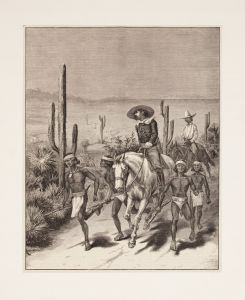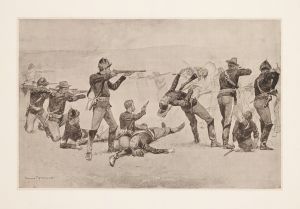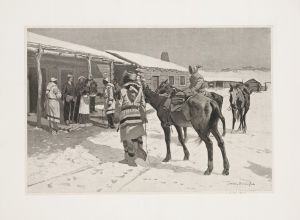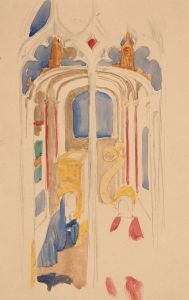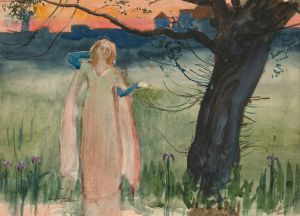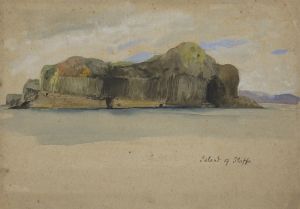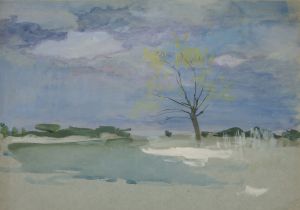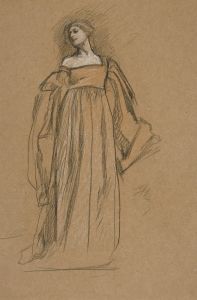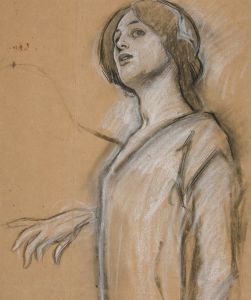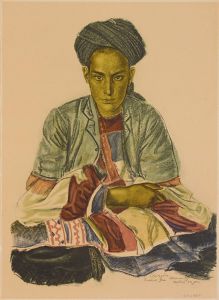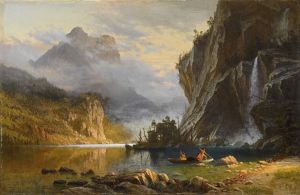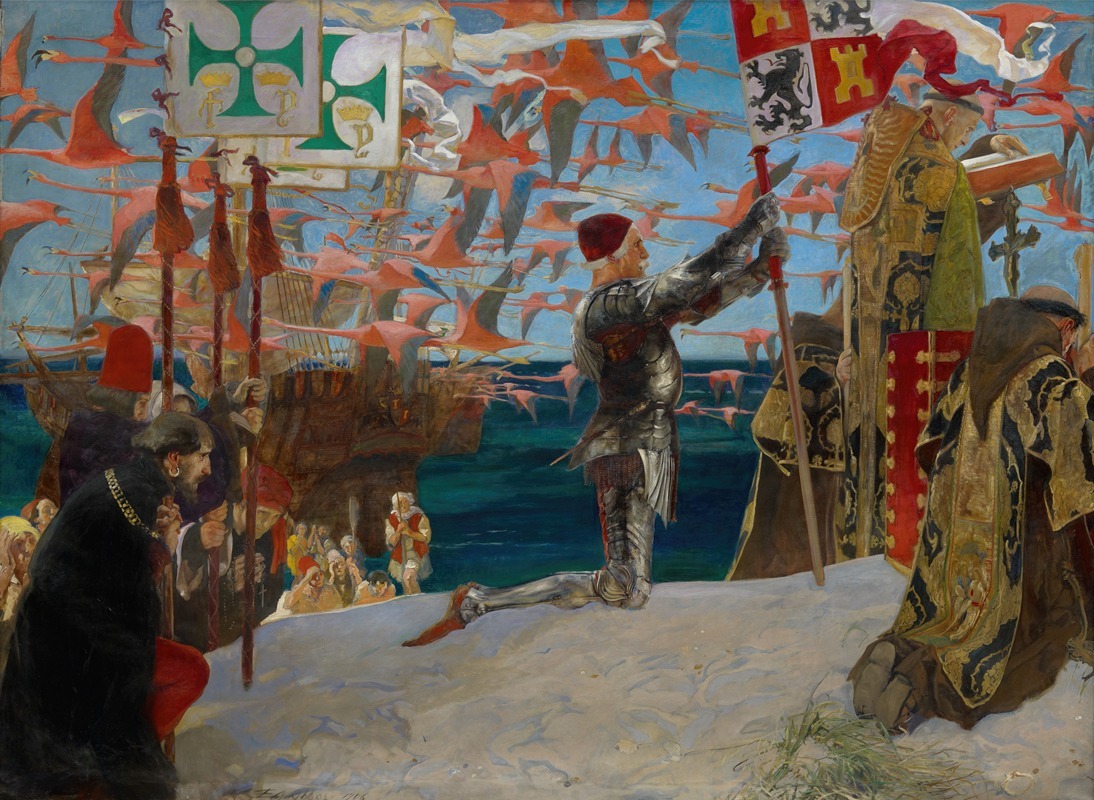
Columbus in the New World
A hand-painted replica of Edwin Austin Abbey’s masterpiece Columbus in the New World, meticulously crafted by professional artists to capture the true essence of the original. Each piece is created with museum-quality canvas and rare mineral pigments, carefully painted by experienced artists with delicate brushstrokes and rich, layered colors to perfectly recreate the texture of the original artwork. Unlike machine-printed reproductions, this hand-painted version brings the painting to life, infused with the artist’s emotions and skill in every stroke. Whether for personal collection or home decoration, it instantly elevates the artistic atmosphere of any space.
"Columbus in the New World" is a painting by the American artist Edwin Austin Abbey, created in 1906. Abbey was a prominent illustrator and painter known for his murals and illustrations, particularly those depicting historical and literary subjects. This painting is one of his significant works that captures a pivotal moment in history.
The artwork portrays Christopher Columbus, the Genoese explorer, upon his arrival in the New World in 1492. This event marked the beginning of European exploration and colonization of the Americas. Abbey's painting is celebrated for its detailed and dramatic representation of this historical moment.
In "Columbus in the New World," Abbey uses a realistic style to depict Columbus and his crew as they first set foot on the land that would later be known as the Americas. The painting shows Columbus standing prominently, often depicted holding a flag or a cross, symbolizing the claiming of the new land for Spain and the spread of Christianity. His crew members are shown around him, some kneeling in prayer, others looking in awe at the new land, and some preparing to explore further.
Abbey's attention to detail is evident in the careful rendering of the period costumes, the expressions of the figures, and the lush, exotic landscape that suggests the tropical environment of the Caribbean islands where Columbus first landed. The painting captures the sense of wonder and discovery that characterized this moment in history.
Edwin Austin Abbey was born in 1852 in Philadelphia, Pennsylvania. He began his career as an illustrator for magazines such as Harper's Weekly, where he gained recognition for his illustrations of works by authors like Charles Dickens and William Shakespeare. Abbey later moved to England, where he continued to work on illustrations and large-scale murals. His work often reflected his interest in historical and literary themes, and he became known for his ability to bring these subjects to life with his detailed and dynamic compositions.
"Columbus in the New World" is part of a larger body of work by Abbey that includes murals and paintings commissioned for public buildings and private collections. His work is characterized by its historical accuracy, attention to detail, and the ability to convey the drama and significance of historical events.
The painting is housed in the Pennsylvania State Capitol in Harrisburg, Pennsylvania, where it is part of a series of murals that Abbey created for the building. These murals depict various scenes from American history and are considered some of Abbey's most important works. "Columbus in the New World" stands out as a significant piece within this series, capturing a moment that had a profound impact on the course of history.
Edwin Austin Abbey's contribution to American art and his ability to depict historical events with such vividness and accuracy have earned him a lasting place in the history of American painting. "Columbus in the New World" remains a testament to his skill as an artist and his dedication to bringing historical moments to life through his art.





